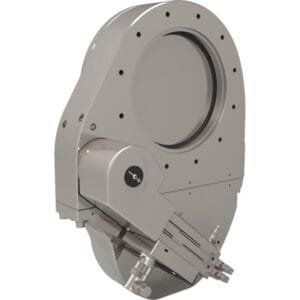Why Choose the DN350CF (16.50″ OD) 304L SS Standard ConFlat® UHV Flange from TFM?
When it comes to building or upgrading an ultra-high vacuum (UHV) system, component quality and precision are essential. Among the most critical pieces in any vacuum system are the flanges—responsible for maintaining the integrity of the vacuum seal under extreme conditions. The DN350CF (16.50″ OD) 304L SS Standard ConFlat® Flange, available from TFM, stands out as a top-tier choice for professionals in research, semiconductor, aerospace, and other high-tech industries.
Built for Demanding UHV Environments
The DN350CF ConFlat® flange is designed specifically for ultra-high vacuum applications, where performance, durability, and compatibility matter most. With a large 16.50-inch outer diameter, this flange supports high-capacity vacuum chambers and complex assemblies that require reliable, leak-tight connections.
Superior Material: 304L Stainless Steel
TFM manufactures this flange using 304L stainless steel, known for its excellent corrosion resistance, low carbon content, and superior weldability. This makes it particularly suitable for cleanroom environments and vacuum systems that demand contamination-free components. The low carbon content also minimizes the risk of carbide precipitation during welding, ensuring structural integrity and vacuum reliability.
Industry-Standard ConFlat® Design
The DN350CF flange features a knife-edge sealing surface, a hallmark of the ConFlat® standard. This design compresses a soft copper gasket between flanges, creating a secure, metal-to-metal seal that withstands extremely low pressures and resists outgassing. The ConFlat® format ensures full compatibility with other CF components, simplifying system integration and future upgrades.
Key Benefits of the DN350CF Flange
Precision Machined: Each flange is manufactured to tight tolerances for consistent performance.
Vacuum Integrity: Supports pressures down to 10⁻¹² Torr, making it ideal for UHV environments.
Corrosion Resistance: 304L stainless steel provides lasting durability and stability.
Scalability: The DN350CF is suitable for large vacuum systems where high conductance is needed.
Ease of Integration: Fully compatible with standard CF vacuum components, including viewports, valves, and feedthroughs.
Applications Across Advanced Industries
The DN350CF flange is not just a part—it’s a solution for critical vacuum environments. TFM’s customers use these flanges in:
Semiconductor fabrication
Surface science instrumentation
Nuclear fusion and particle physics
Synchrotron radiation facilities
Aerospace vacuum testing
Whether you’re designing a new vacuum system or retrofitting an existing one, the DN350CF offers the robustness and performance required for high-stakes applications.
Why Buy from TFM?
TFM is a trusted supplier of high-quality vacuum components, offering:
Consistent stock and quick delivery
Technical expertise and responsive support
Competitive pricing on premium-grade materials
Customization options upon request
With a strong focus on reliability, TFM ensures that every component—like the DN350CF flange—is ready to meet the challenges of modern UHV applications.
Ordering Table
| Flange Size/OD | Type | Part Number |
| DN350CF (16.50" OD) | Fixed | F1650X000N |
| DN350CF (16.50" OD) | Fixed Tapped | F1650X000NM |
| DN350CF (16.50" OD) | Fixed Tapped | F1650X000NT |
| DN350CF (16.50" OD) | Rotatable | F1650X000R |
| DN350CF (16.50" OD) | Rotatable Tapped | F1650X000RT |
| DN350CF (16.50" OD) | Fixed | F1650X1400N |
| DN350CF (16.50" OD) | Fixed Tapped | F1650X1400NM |
| DN350CF (16.50" OD) | Fixed Tapped | F1650X1400NT |
| DN350CF (16.50" OD) | Rotatable | F1650X1400R |
| DN350CF (16.50" OD) | Rotatable Tapped | F1650X1400RT |





Reviews
There are no reviews yet.